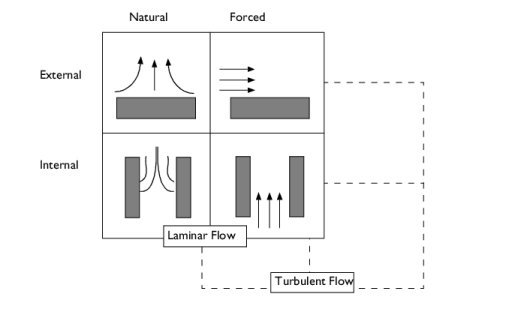

|
•
|
|
•
|
|
•
|
|
•
|
|
•
|
h is the heat transfer coefficient (SI unit: W/(m2·K))
|
|
•
|
L is the characteristic length (SI unit: m)
|
|
•
|
ΔT is the temperature difference between the surface and the external fluid bulk (SI unit: K)
|
|
•
|
g is the acceleration of gravity (SI unit: m/s2)
|
|
•
|
k is the thermal conductivity of the fluid (SI unit: W/(m·K))
|
|
•
|
ρ is the fluid density (SI unit: kg/m3)
|
|
•
|
U is the bulk velocity (SI unit: m/s)
|
|
•
|
μ is the dynamic viscosity (SI unit: Pa·s)
|
|
•
|
Cp is the heat capacity at constant pressure of the fluid (SI unit: J/(kg·K))
|